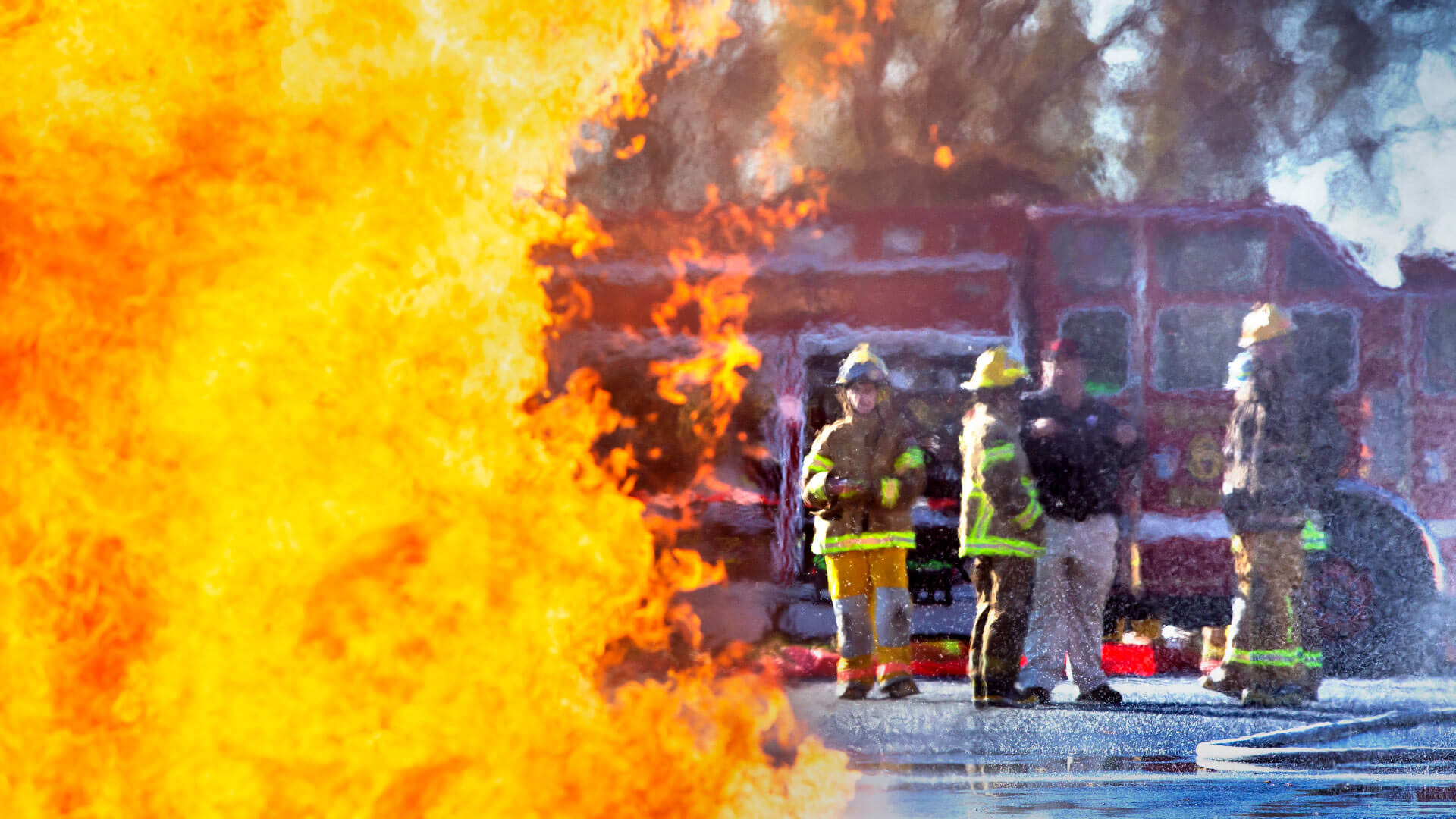- November 19, 2018
- By Colleen Crowley M.Jour. ’19
I’ve never worn something this expensive. I’ve also never worn something so grimy and baggy. But as I suited up for the first time in firefighter turnout gear, I felt a rush of exhilaration—even before I stepped into a room ablaze.
Every year, the Maryland Fire and Rescue Institute (MFRI) at the University of Maryland hosts Congressional Fire Training Day, where Capitol Hill staffers, members of state government and representatives of other organizations experience a taste of what it’s like to be a firefighter.
“Our job is to educate,” says Michael Cox, executive director of MFRI. “We just want folks to have a better understanding of what fire and emergency services do on an day-in, day-out basis and what they’re faced with.”
The institute, the state’s top training and education center for emergency services, has held these daylong training sessions for at least 22 years so that lawmakers (and the support staffers who actually write laws) remember what it takes to be a firefighter when relevant legislation cross their desk. About 35 legislative types arrived on this chilly Friday morning at the facilities just down Campus Drive, yet a world away from the university with their burnt-out buildings and gas lines aflame.
Participants were first split into groups, then directed to a changing area. I donned my helmet, found thick rubber boots that were vaguely the correct size, and took a jacket that I was assured was “meant to be that big.” The one pair of pants that might have fit me were long gone, so firefighters cinched a leftover pair to an approximate, if roomy, fit.
I exited the changing room feeling like I should be on a ski mountain, only less fluffy and far more prepared for a life-or-death situation. Getting dressed in the $3,000 turnout gear had taken nearly 15 minutes; firefighters have to do it in under two.
My group ambled to our first station, the flammable gas prop, while getting accustomed to the weight of the gear. Our instructor showed us how to handle the settings of a fire hose nozzle and move with the fire hose as a team of three. Somehow, the hose became heavier as I progressed through the two support positions. When I finally reached the lead position, it felt like I was dragging a hose filled with concrete, despite my backup. As I sprayed back and forth, the wind changed direction and I gave myself an accidental shower, leaving me slightly soggy the rest of the morning.
We then moved on to the ladder truck, a vehicle that can cost upward of $1 million. I and another member of my group were harnessed into the bucket with a firefighter and slowly, we began our ascent 100 feet into the air. I briefly reconsidered whether I’d been wrong in thinking that I don’t have a fear of heights, but the bracing wind and the view stretching all the way to Silver Spring erased my worries.
After safely returning to firmer ground, it was off to the fire behavioral lab—the technical term for the blackened four-story tower commuters see on their daily trips to campus. There, we put on heavy gloves, a balaklava-esque head covering, an air tank and a Self-Contained Breathing Apparatus (SCBA), which is essentially scuba gear sans the underwater element. In total, I was now carrying 60 pounds of gear.
As a safety measure, the SCBA units have a built-in motion detector, so as my breathing apparatus was suction-cupped to my face for a tight seal, I did my best Shakira impression and moved my hips side to side to prevent the shrill alarm from sounding.
Then we lined up, hands on each other’s shoulders, and were led into a darkened doorway. A narrow corridor opened into a small room, where three additional firefighters soon lit a blaze. A blanket of smoke quickly filled the space, and I wondered if the Darth Vader-like sounds coming from my breathing apparatus were normal. When instructed, I crouched to the ground to better see the fire through a thermal imaging camera before passing it on and returning myself to zero visibility.
A swirl of sparks briefly appeared when the fire was eventually extinguished, and after several seconds in darkness, the glow of the fire receded. A door opened to the outside, and what had been total blackness was illuminated in a cloud of white, like a cartoonish vision of heaven.
Soon enough, the room was vented and we again grabbed hold of each other’s shoulders, making our way back to the world of sight.
Back at the changing rooms, I stripped off my now even sweatier and smellier turnout gear, and returned to my normal life, the smell of gas and smoke clinging to me in class an hour later as a reminder of what firefighters do every day.
